This comprehensive article will help you establish whether you have a first edition Harry Potter on your hands. If you do have a first edition and are interested in selling it, please contact us on our Sell To Us page.
J. K. Rowling’s Harry Potter series has gained immense popularity, critical acclaim and commercial success worldwide, and first editions of her books have very quickly become collectable. By far the most valuable book in the series is the first, Harry Potter and the Philosopher’s Stone, published on 30 June 1997 by Bloomsbury in London.
But to have any real collectable value, it has to be a copy of the first edition, first impression (also known as the first printing). This means the very first batch of books off the press, of which there were only a few thousand. Reprints of Philosopher’s Stone (and even first editions of the later books in the series) have much lower values, in part because so many more of them were printed.
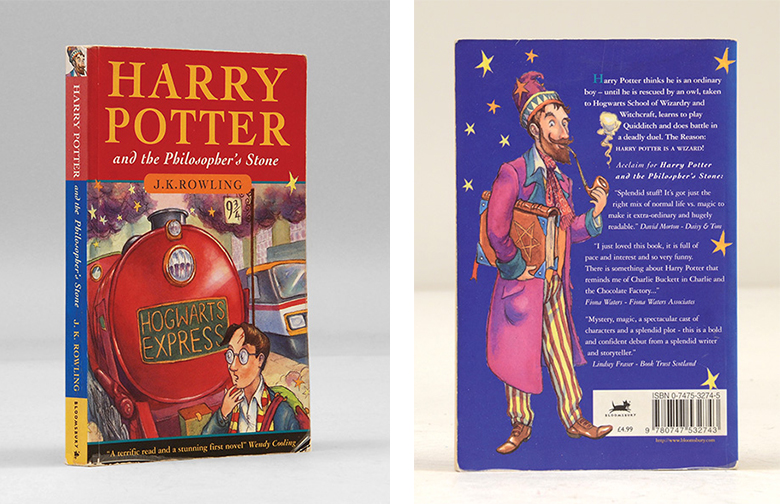
Harry Potter first edition, softcover issue
First, what do the books look like? The first printing was bound in two different ways. The rarest is the hardback issue, with a cover of laminated boards. Only 500 copies were bound this way, and 300 of those were sent to libraries. Because library books receive so much wear and tear we are left with only 200 copies in potentially fine collectable condition, and these rarely appear on the market. The other binding was a regular paperback of which a few thousand copies were produced for sale.
Next , how do you tell whether your copy, which may look very similar to the one pictured above, is really a valuable first edition?
To be a first edition, in either hard or soft cover, there are four very important issue points, all of which your book must have:
1. The publisher must be listed as Bloomsbury at the bottom of the title page. See photo below:
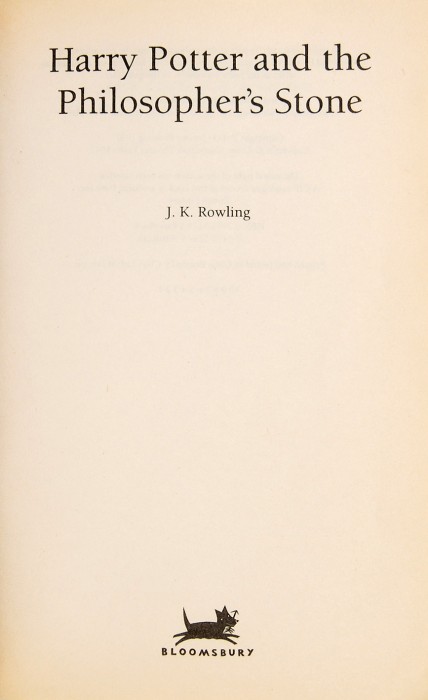
2. The latest date listed in the copyright information must be 1997.
3. The print line on the copyright page must read “10 9 8 7 6 5 4 3 2 1”, ten down to one, exactly. The lowest figure in the print line indicates the printing. (For instance, if your copy has “20 19 18 17”, it’s a less valuable seventeenth printing.)

First edition number line.
You may have been told that you have a first printing if the copyright is in the name of “Joanne Rowling”, but that’s not true. All early printings of this title have the same copyright statement.
This is what the whole back of the title page should look like:
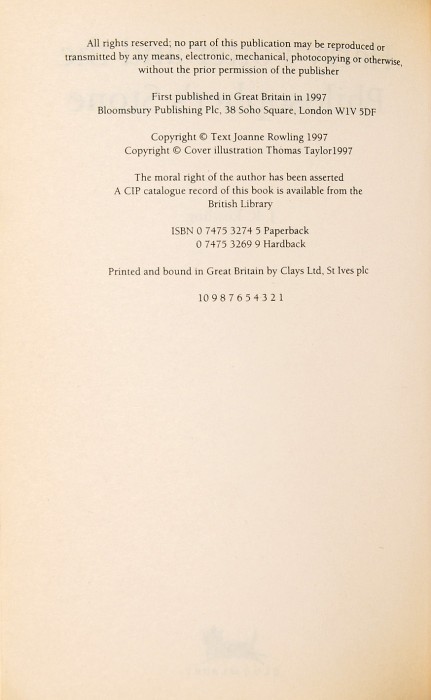
Back of title page in the first edition of Harry Potter.
4. On page 53, in the list of school supplies that Harry receives from Hogwarts, the item “1 wand” must appear twice, once at the beginning and once at the end. This mistake was corrected in the second printing of the book (although it re-appeared in some later printings).
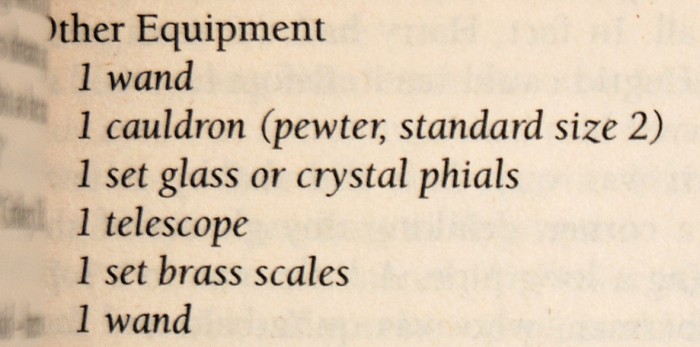
Mistake on page 53.
5. On the back cover there is a missing “o” in “Philospher’s Stone”.

Philosopher’s spelled as Philospher’s with the missing “o”.
If your book meets all these requirements then congratulations, you have a first edition! Depending on the binding and condition, it could be worth anywhere from many hundreds to tens of thousands of pounds. If you’re interested in selling it, or would like to have a custom protective box made to house it, then please contact us. To see the Harry Potter books we currently have for sale please click here.
Though both the paperback and hardback first editions of the Philosopher’s Stone are of value, this is not the case with the other books in the series. For the other titles, it is only the first hardback edition with the dust jacket that have collectable value. If you have a copy of one of these titles that meets all these requirements below, and that you would like to sell, please contact us.
Chamber of Secrets must have been published in 1998 by Bloomsbury with no mention of subsequent edition, publisher, or later date on the copyright page, and have a printing number sequence of “10 9 8 7 6 5 4 3 2 1”.
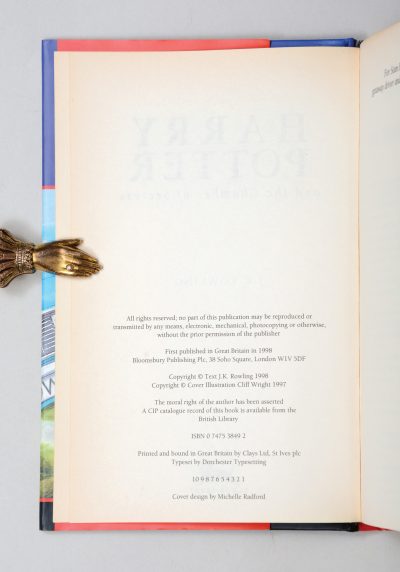
Chamber of Secrets first edition copyright page
Prisoner of Azkaban must have been published in 1999 by Bloomsbury with no mention of subsequent edition, publisher, or later date on the copyright page, and have a printing number sequence of “10 9 8 7 6 5 4 3 2 1”. The most valuable copies are the first issue, which must have “Joanne Rowling” as the author instead of “J. K. Rowling” on the copyright page, and a dropped line of text on page 7.
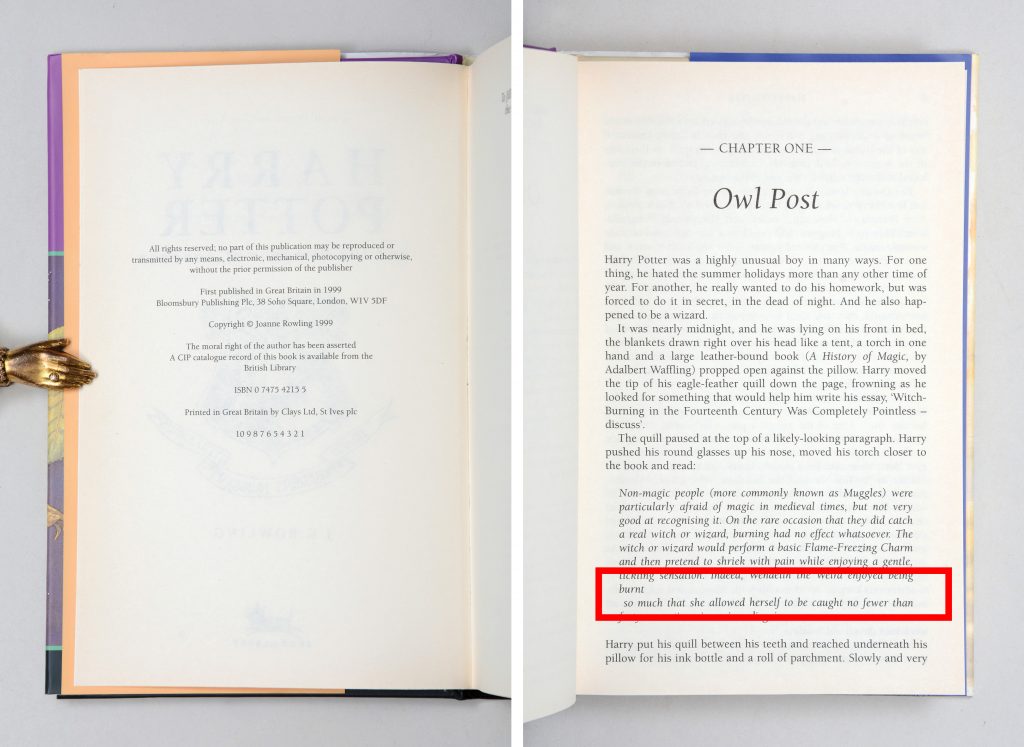
The last four titles in the series, Goblet of Fire, Order of the Phoenix, Half-Blood Prince, and Deathly Hallows, must have the words “First Edition” printed on the copyright page. The print run for the first edition of all of the last four titles was very large, and as a result, even first edition copies in the dust jackets in fine condition are fairly commonly found, and not presently of high value. We are currently interested in acquiring signed copies only of these titles.
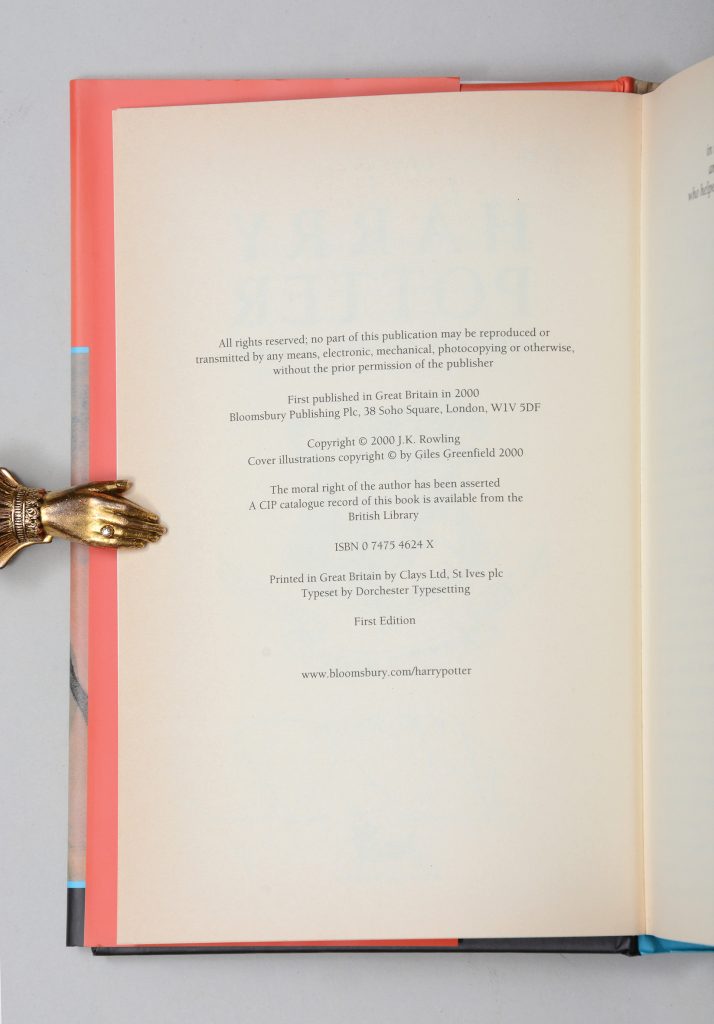
Goblet of Fire copyright page





